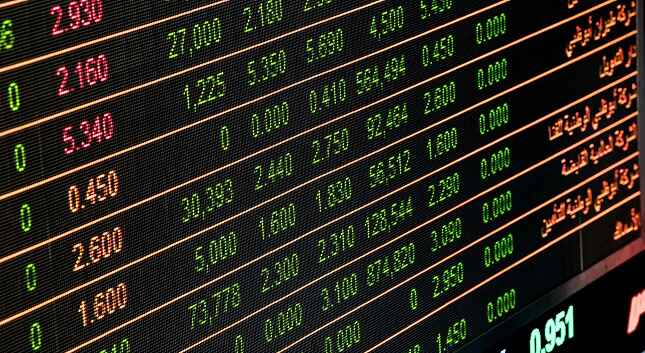India’s position in the global financial markets has grown substantially over the last two decades. In fact, the country is now a key engine of global growth and has attracted the attention of serious international investors. For foreign investors seeking sustainable, long-term returns, the Indian stock market index presents a compelling investment opportunity.
Now, for these global investors, understanding the Indian economy is crucial. The most effective barometer for this is the indexbom: Sensex, as it is the nation’s most widely tracked Indian stock market index.
By analysing the Sensex performance over time, investors can get crucial insights into India’s economic health, corporate profitability and overall investor sentiment. In this article, we are going to explore the reasons behind global investors’ increasing interest in the BSE Sensex index.
Understanding Indexbom: Sensex
The indexbom: Sensex, which stands for the Sensitive Index, is the benchmark index of the Bombay Stock Exchange (BSE). Introduced in 1986, it is India’s oldest and most iconic stock market index. When you hear financial commentators discuss the Indian market, they are most often referring to the BSE Sensex.
One of the key reasons for its significance is its composition. The indexbom: Sensex consists of 30 of the largest, most liquid and financially sound companies listed on the BSE. The stocks in the index are blue-chip entities from a diverse range of key economic sectors, such as banking, information technology, energy, healthcare and consumer goods. The Indian stock market index’s composition makes it the primary gauge for the health and direction of the country’s equity markets and the economy.
The sector-wise composition of the BSE Sensex as of September 2025, along with their respective weightage, is as follows.
- Financial Services – 39.58%
- Consumer Discretionary – 12.95%
- Information Technology – 10.99%
- Energy – 9.72%
- Fast Moving Consumer Goods – 6.44%
- Industrials – 6.03%
- Telecommunications – 5.41%
- Utilities – 3.05%
- Commodities – 2.98%
- Healthcare – 1.77%
- Services – 1.09%
The top 10 companies in the indexbom: Sensex as of September 2025, along with their respective weightage, are mentioned below.
- HDFC Bank Limited – 15.18%
- ICICI Bank Limited – 10.13%
- Reliance Industries Limited – 9.72%
- Infosys Limited – 5.42%
- Bharti Airtel Limited – 5.41%
- Larsen & Toubro Limited – 4.5%
- ITC Limited – 4.08%
- State Bank of India Limited – 3.82%
- Axis Bank Limited – 3.4%
- Mahindra & Mahindra Limited – 3.19%
The Sensex’s performance is essentially a reflection of the core strength of India’s organised corporate sector. When these major companies perform well, it is a strong indication that the broader economy is also on a healthy growth path. This is why a rising Sensex share price today is seen as a positive sign for the entire nation.
Why Global Investors Are Interested
While the interest from global investors in the indexbom: Sensex may not be a new phenomenon, it has certainly intensified in the past few years. This is due to a powerful combination of structural advantages and long-term potential. Here are four key reasons compelling global investors to invest in the BSE Sensex.
India’s Robust GDP Growth and Policy Reforms
India has consistently been one of the fastest-growing major economies in the world. The high GDP growth has provided companies with a strong foundation for corporate earnings. Furthermore, the Indian government has also implemented significant policy reforms. These are aimed at improving the ease of doing business, attracting manufacturing and formalising the economy. The allure of strong economic growth combined with favourable policies is pushing foreign investors to consider investing in the indexbom: Sensex.
Sectoral Diversity and Representation in the Sensex
Another key reason why many global investors are looking toward the Indian stock market index is for the excellent diversification that it offers. The Sensex is not dominated by a single sector. Instead, it includes world-class private sector banks, global IT services giants, large energy conglomerates and major consumer goods companies. This balance makes it the ideal option for participating in India’s broad-based growth.
Increasing FPI (Foreign Portfolio Investment) Inflows
Foreign Portfolio Investors (FPIs) have long been key participants in the Indian stock market. While their flows can be volatile in the short term, the long-term trend often tends to be positive. These investors see India as a core holding within their emerging market allocations. Their continued participation provides liquidity and validates the Indian stock market index’s long-term potential.
Long-Term Growth Trajectory of Indian Equities
Indian equities have delivered remarkable returns over the long term. The Sensex performance over the past two or three decades has created immense wealth. So much so that it has outperformed many other global indices. The long history of wealth creation gives global investors a strong reason to believe in the future potential of the Indian stock market index.
Performance and Historical Perspective
To truly appreciate the indexbom: Sensex, you must look at its history. This provides a clear perspective on its resilience and wealth-generation capability.
Overview of Sensex’s performance over the past decades
The Sensex performance over the past decades has been nothing short of stellar. From its base value of 100 in 1986, it has climbed to Rs. 83,871.32 as of November 11, 2025. Such stellar performance represents a compound annual growth rate that has beaten inflation and most other asset classes. As of September 2025, the 10-year annualised returns of the Sensex stood at 13.26%.
That said, the journey of the BSE Sensex was not linear. Over the years, the index witnessed several major economic reforms in 1991, the dot-com boom and bust, the 2008 global financial crisis and the 2020 COVID-19 pandemic. Through each of these events, the index has shown a strong long-term upward bias.
Comparison with Other Global Indices
When you compare the BSE Sensex to other global indices, its strength becomes even more apparent. While indices like the S&P 500 in the US have also performed very well, the indexbom: Sensex has often delivered superior returns.
In terms of annualised returns, the Sensex has delivered 13.26% in the last 10 years. During the same period, the S&P 500’s annualised returns stood at 12.68%. This outperformance is due to the country’s higher economic growth rate and is a key reason why global investors are allocating more capital to India.
Resilience During Global Downturns and Quick Recovery Trends
The long-term Sensex performance also highlights the market’s resilience. The Indian stock market index has weathered numerous global and domestic crises. After each downturn, it has shown a strong trend of recovery. It often recovers faster and stronger than many of its emerging market peers.
A good example of this resilience is the COVID-19 pandemic-induced downturn. The Indian stock market index witnessed a record downturn during the lockdowns. However, once the economy was back on track, the index rose sharply to touch new highs. This resilience demonstrates the underlying strength and dynamism of the Indian economy. It shows investors that volatility is temporary, but the growth story is permanent.
Investment Opportunities Through Sensex
Global investors have several sophisticated and accessible ways to invest in the indexbom: Sensex. The most popular methods are through passive investment vehicles.
Exchange-Traded Funds (ETFs) are mutual funds that track the BSE Sensex. Since these funds are listed on stock exchanges, investors can freely purchase and sell units. Each unit represents a basket of all 30 Sensex companies. Sensex ETFs provide instant diversification at a very low cost.
Similarly, index funds that mirror the indexbom: Sensex are available to both domestic and international investors. For large institutional investors, direct investment in the 30 constituent companies that make up the Sensex is also an option through the Foreign Portfolio Investment (FPI) route. This allows them to build large, long-term positions in Indian equities.
Role of Data-Driven Analysis and Platforms Offering Sensex Live Updates
To make accurate investment decisions, data-driven analysis is essential. As an investor, you cannot just rely on guesswork. In fact, you need access to clean, accurate and real-time data. Here is where platforms that offer Sensex live updates and sophisticated analytical tools become crucial.
Investors can stay updated with real-time market movements, long-term trends and sectoral weightages on the indexbom: Sensex page of Samco Securities. The live data can empower them to manage risk and identify opportunities as they emerge.
India’s Economic Outlook and Future Potential
India’s future potential is a key driver of the long-term outlook for the BSE Sensex. At the outset, the economic story of the country appears to remain incredibly positive for the next decade, fueled by three key factors: government initiatives, infrastructure growth, and digitalisation.
The government’s focus on Make in India and infrastructure growth is a massive catalyst for infrastructure development. This public spending is creating jobs and making businesses more competitive. It also has a multiplier effect on the economy.
Infrastructure development directly benefits the large-cap companies in the indexbom: Sensex, which are involved in construction, finance and logistics. Furthermore, the rapid pace of digitalisation is transforming every industry, from digital payments to e-commerce.
Why India is Expected to Remain a Top Emerging Market Destination for the Next Decade
The above-mentioned factors are the primary reasons why India is expected to remain a top emerging market destination. Additionally, the country’s large, young population provides a demographic advantage in the form of a massive consumer market.
Unlike many ageing economies, India has a growing workforce. When you combine this demographic dividend with stable governance, pro-growth policies and a strong corporate sector, the case for investing in India becomes very clear. The indexbom: Sensex is the most direct and liquid way for global investors to participate in this multi-decade growth story.
Conclusion
The indexbom: Sensex serves as a comprehensive gateway for investors to participate in India’s compelling growth story. It is much more than just another Indian stock market index. It is a reflection of the market sentiment, corporate strengths and vast future potential of the nation. The stable Sensex performance, combined with India’s strong GDP growth and ongoing reforms, makes it a top choice for global investors.
As an investor, staying informed is now more important than ever. The factors that influence the BSE Sensex are dynamic. By consistently monitoring the Sensex live data and expert analysis regularly, you can make informed decisions that position your portfolio for long-term growth.










































